Structure-function relationships in tendons: a review
- PMID: 18304204
- PMCID: PMC2408985
- DOI: 10.1111/j.1469-7580.2008.00864.x
Structure-function relationships in tendons: a review
Abstract
The purpose of the current review is to highlight the structure-function relationship of tendons and related structures to provide an overview for readers whose interest in tendons needs to be underpinned by anatomy. Because of the availability of several recent reviews on tendon development and entheses, the focus of the current work is primarily directed towards what can best be described as the 'tendon proper' or the 'mid-substance' of tendons. The review covers all levels of tendon structure from the molecular to the gross and deals both with the extracellular matrix and with tendon cells. The latter are often called 'tenocytes' and are increasingly recognized as a defined cell population that is functionally and phenotypically distinct from other fibroblast-like cells. This is illustrated by their response to different types of mechanical stress. However, it is not only tendon cells, but tendons as a whole that exhibit distinct structure-function relationships geared to the changing mechanical stresses to which they are subject. This aspect of tendon biology is considered in some detail. Attention is briefly directed to the blood and nerve supply of tendons, for this is an important issue that relates to the intrinsic healing capacity of tendons. Structures closely related to tendons (joint capsules, tendon sheaths, pulleys, retinacula, fat pads and bursae) are also covered and the concept of a 'supertendon' is introduced to describe a collection of tendons in which the function of the whole complex exceeds that of its individual members. Finally, attention is drawn to the important relationship between tendons and fascia, highlighted by Wood Jones in his concept of an 'ectoskeleton' over half a century ago - work that is often forgotten today.
Figures

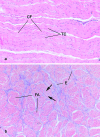
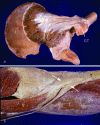
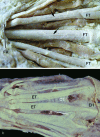

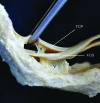





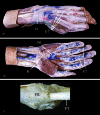
References
-
- Ackermann PW, Li J, Finn A, Ahmed M, Kreicbergs A. Autonomic innervation of tendons, ligaments and joint capsules. A morphologic and quantitative study in the rat. J Orthop Res. 2001;19:372–378. - PubMed
-
- Alexander RM. Elastic mechanisms in primate locomotion. Z Morphol Anthropol. 1991;78:315–320. - PubMed
-
- Alfredson H, Lorentzon R. Sclerosing polidocanol injections of small vessels to treat the chronic painful tendon. Cardiovasc Hematol Agents Med Chem. 2007;5:97–100. - PubMed
-
- Alm A, Stromberg B. Vascular anatomy of the patellar and cruciate ligaments. A microangiographic and histologic investigation in the dog. Acta Chir Scand Suppl. 1974;445:25–35. - PubMed
MeSH terms
LinkOut - more resources
Full Text Sources
Other Literature Sources

